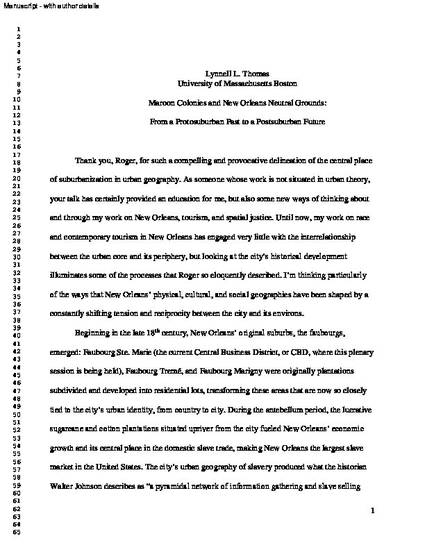
This essay examines New Orleans maroon colonies as a precursor to the postsuburban constellations that shape the contemporary urban landscape. These communities served as the original neutral grounds where Africans, Afro-Creoles, and Native Americans created spaces beyond the purview of slave owners and government authorities. These protosuburban enclaves anticipated the vibrancy and prolificacy of the “global urban periphery” that Roger Keil describes in his research. They also inform twentieth- and twenty-first-century efforts by black New Orleanians to carve out their own urban neutral grounds: spaces resistant to the hegemonic forces of neoliberalism and neo-Bourbonism, as manifested in the traditions of the Mardi Gras Indians, jazz funerals, second line parades, Baby Dolls, and other grassroots social groups central to New Orleans' place identity. Whereas maroons staked a claim in the hinterlands beyond the city, these modern-day practitioners lay claim on the urban commons, transforming city space for their own purposes.
Available at: http://works.bepress.com/lynnell_thomas/13/

Post-print version of articles published in Urban Geography. The Version of Record of this manuscript has been published and is available in Urban Geography 2020: https://www.tandfonline.com/doi/10.1080/02723638.2019.1614370
“Maroon Colonies and New Orleans Neutral Grounds: From a Protosuburban Past to a Postsuburban Future.” Urban Geography. Print: 41.1 (January 2020): 21-26. Online: May 23, 2019.